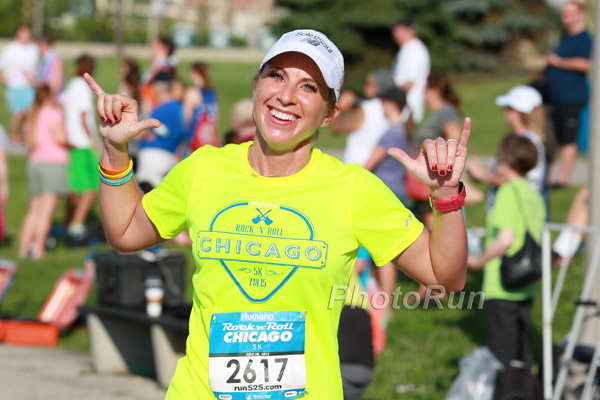Running on Warm Summer Training Days
Uta Pippig is a three-time champion of the marathons in Boston and Berlin, writer and public speaker for “Take The Magic Step®” and “Running to Freedom™.” She is now also writing for the German daily newspaper “DIE WELT”.

Soon enough, the first heat wave will arrive when the sun is merciless and there is no breeze bringing relief. Even under such conditions, we can be physically active. In order not to stress the cardiovascular system, we need to take some precautions.
Fortunately, there are simple ways to adjust your training during the hot summer. For example, use the cooler morning and evening hours to exercise. If an intensive or longer training session is your goal, try moving this workout to the weekend, when there is less time pressure.
Pack a Frozen Towel

After some of my “heat” training sessions and intensive interval programs on forest trails I like to go swimming. If there is no swimming pool or lake nearby, just put those “hot running feet” in any cold water—it is such a gooood feeling!
If you want to train in a stadium in the evening and have a professional approach, wait until the track is in the shade to start your workout. Bring a cooler with appropriate gear for the job, including a water bottle, ice packs, and a frozen towel.
Take a look at Uta’s Insights: “How to Hydrate Properly on Warm Summer Workout Days”
Change Your Workout
On warm days, give your body enough time to get used to the situation. Start your workout slower than planned, and only increase your speed as long as you feel comfortable. A heart rate monitor is worth gold here, it helps to determine the personal workload. If you do not own one, you can stop once or twice during your session and check your pulse with a watch.
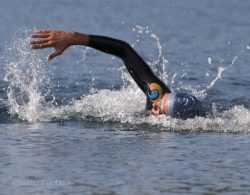
Some of you can exchange your shoes for wheels. Enjoy a bike ride and the feeling of the ambient wind. You can also run on a treadmill or go to a swimming pool. Deep-water running is very efficient, and improves strength and endurance.
Then there are the lucky ones among us who can enjoy a fresh breeze while jogging by the sea. But stay with the cool mornings or the sunset hours. Since the UV sun exposure near the ocean is significantly higher, always remember to use sunscreen and head protection. Ideally this head protection would cover the base of your skull, where also the heat-regulating center for your body is located.
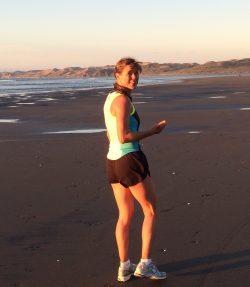
Cool Your Body
Starting the workout in a well-hydrated condition is crucial for health and stamina. Anyone who drinks enough fluid during and after the workout is preventing a potential decline in performance and is improving their recovery afterwards. Pure water is not the best hydration solution, especially when the duration of the session is more than one hour. Isotonic drinks enter the blood stream faster and provide important minerals.
Pay attention to cooling your body—before, during, and after training. A well-stocked cooler, as I described above, is very helpful. Rub yourself with an ice cold towel before and after running, and if necessary during your run. If you are training at a facility or on a loop course a cooling regimen will be easier, since you will be nearer your gear. Pouring water over your head makes for additional cooling and promotes a sense of well-being.

And not to be ignored, wear light-colored, breathable clothing. This way, the sweat on your skin can better evaporate, which has a cooling effect, and it conducts less heat.
If it is too hot during the day, wait for a cooling summer thunderstorm—and afterwards run towards the rainbow, play with the shadows of the evening sun. Put a smile on your face and keep a cool focus.
In the next column, I will share some tips for optimal hydration during the warm months of the year. I wish you a wonderful summer with fitness and running.
Yours,

Adapted from my column „Mit diesen Tipps können Sie auch an heißen Tagen laufen“ in DIE WELT with permission.
*Uta Pippig, 58, is one of the most successful female marathon runners of the ’90s. She has won Berlin and Boston three times each. Today she lives in Berlin, Germany, and in Boulder, Colorado, and with her organization “Take The Magic Step®” she commits herself as a speaker, fitness coach, and meditation teacher to increasing people’s awareness in the areas of fitness, nutrition, and health.
Reading Suggestions:
- Benefits of Exercise for Children
- Yoga for the Right Balance
- Enjoy Your Summertime Fitness: Part II—Proper Hydration and Summer Nutrition
Updated July 4, 2024
Updated June 1, 2018
- Posted June 6, 2017
© Copyright 2017-2024 Uta Pippig and Take The Magic Step®. All Rights Reserved.
More Insights
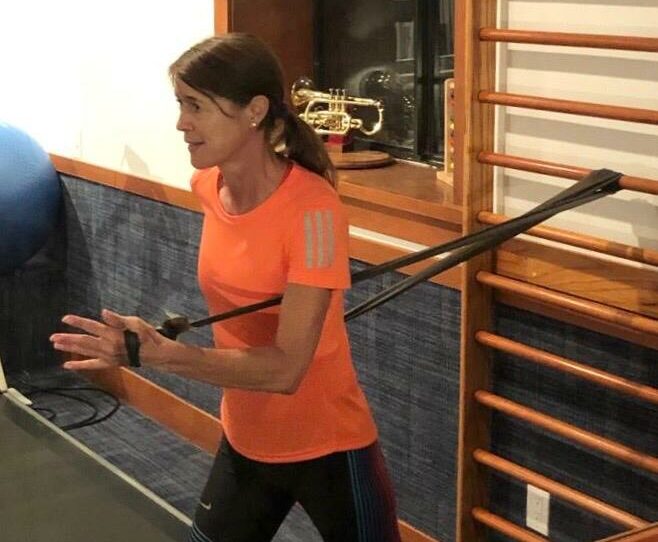
Uta’s Favorite Exercises to Improve Your Fitness and Running Technique
Uta Pippig has designed an at-home fitness program which only uses your own body weight, steps, and a Theraband. They are eight exercises that Uta often does herself.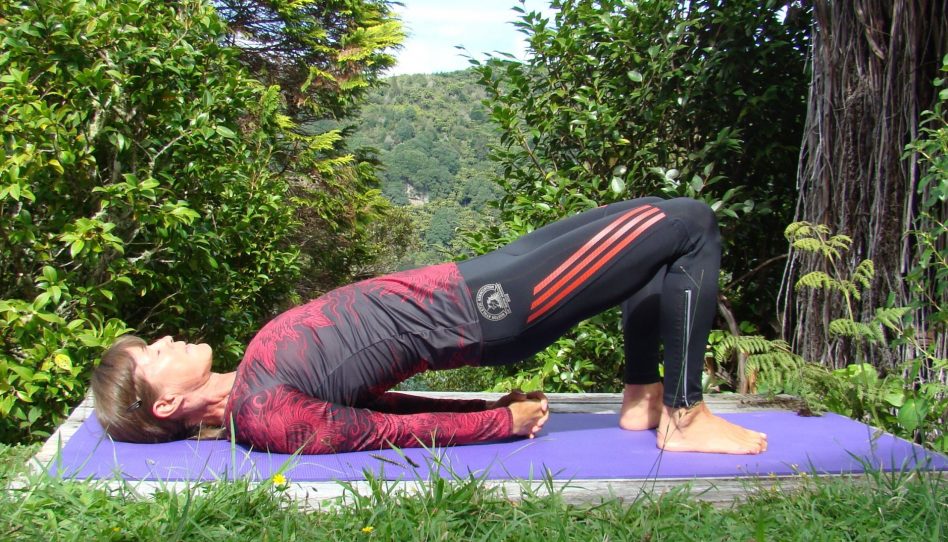
Uta’s Yoga and Stabilization Guide for a Better Running Technique
Runners, especially, can benefit from a well-balanced yoga and stabilization program. Uta suggests effective combinations of poses and exercises that have helped her gain the flexibility and balance that can lead to a better running technique for everyone.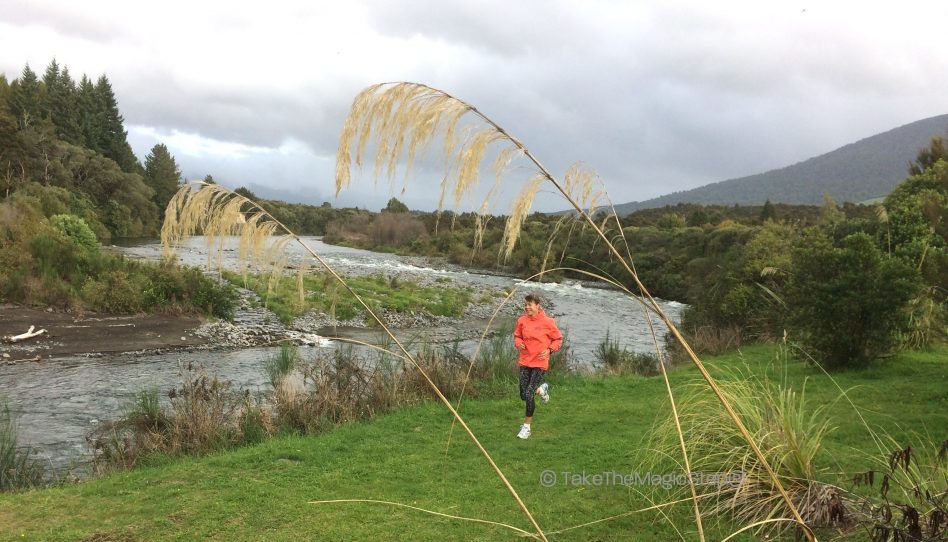
How a Clever Mental Focus Can Get You Through Running Injuries
Running injuries can be devastating, but learning to focus mentally can speed up the healing process. Uta explains how the forced break from running can actually provide future benefits.